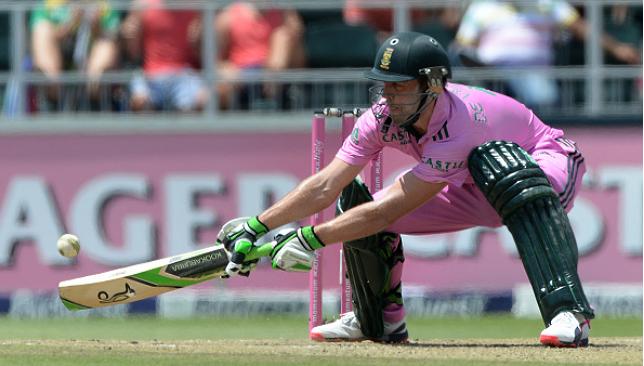
The International Cricket Council does care for the balance of the game after all. ICC CEO Dave Richardson admitted as much when he said modern bats have ‘shifted the balance in favour of batsmen’, especially in limited-overs cricket.
– PLAY:World Cup Stick Cricket NOW
– Cricket World Cup 2015 – Team India group stage predictions
– Glenn Maxwell cleans up, MS Dhoni admits to World Cup pressure
Centuries are being scored at an alarming rate, batsmen are clearing the ropes even with clear mis-hits and some of the best bowlers in the world are being carted around without a care in the world.
Here are some statistics that really grab your attention. According to a report commissioned last year by the Marylebone Cricket Club, the lawmakers of the game, it found that the thickness of edges on modern day bats had increased a staggering 300 per cent and the ‘sweet spot’ – the centre of the bat that delivers the punch to a shot – has burgeoned two-and-a-half times over the years.
If we look at the numbers, it’s clear as daylight that batsmen are having a field day. Till 2010, no batsman had ever crossed the 200-run mark in an innings in ODIs. Since Sachin Tendulkar became the first man to do so – against the Proteas five years back – the mark has been breached three more times.
In the year 2005, a total of 100 matches saw results and 50 centuries were hit. In 2014, 118 ODIs were completed and a total of 79 three-figure scores were made, including a monumental 264 by Rohit Sharma. Those are some scary numbers if you are a bowler.
South Africa’s AB de Villiers scored the fastest century in the history of one-day cricket, taking five balls off the previous record of 36 deliveries.
That is a monumental jump and it can’t all be down to the talent of a player or the quality of the opposition. Many marauding batsmen have played shockingly poor bowling attacks in the past and no one came even close to de Villiers’ feat.
Despite such startling statistics, there some like Eoin Morgan who feel the thickness of the bats is not an issue and instead it’s the introduction of two new balls and greater fielding restriction, which demands an extra fielder inside the circle, that is the cause of the problem.
But Morgan is missing the point here. Even fielders at the boundary ropes are becoming spectators with the ball sailing over their heads. What’s worse, batsmen have been allowed to flourish and even shots like the switch hit, in which the batter changes his grip completely, has been deemed legal and a testament to the ability of the batsman.
Adding or subtracting the fielders inside the circle or allowing two bouncers per over only scratches the surface when we talk of making the game fair.
The ICC believes ensuring the boundary ropes are 90 yards back wherever possible is the first step in that direction. Restricting the thickness of the blade is something that can be worked upon in the future. There are a few other steps which can be taken immediately to even things out.
One rule I’d change in ODI cricket. Maximum of 10 overs per bowler. Never made sense to me. A batsman isn’t limited to 60 balls.
— Neil Harris (@njhcricket) February 4, 2015
Firstly, we can start by allowing two bowlers to bowl 12 overs in an innings.
Currently, the quota of each bowlers ends at 10 and teams play the good ones out and cash in on those who are not having a good day with the ball.
If we allow two bowlers per side to bowl 12 overs an innings, it will give four extra overs of incisive bowling, if a team has such weapons at their disposal.
The other rule that can be tweaked is that bowlers who are ambidextrous should also be allowed to bowl with their left or right arm without announcing the same.
If a bowler is capable of bowling a legal delivery with either arm, it should be encouraged and that will keep the batsmen guessing and give the hapless bowler something to work with.
A player still has to inform the umpire, and hence the batsmen, whether he is bowling from over or round the wicket. In an ideal world, a bowler should be free to do so according to his whim but the position of the batsman at the non-striking end makes it a difficult proposition.
Let the thickness of bats be restricted, bowlers be allowed to bowl 12 overs with either arm, and the boundary ropes pushed beyond 90 yards and then we will see how many double centuries are hit in one-day cricket.